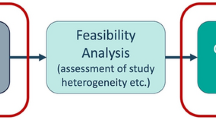Abstract
This paper presents a hybridization of a Constraint Programming (CP) model and search techniques with Local Search (LS) and some ideas borrowed from Genetic Algorithms (GA). The context is the physician rostering problem, whose instances can vary greatly and for which almost no general tool has been developed. It is hoped that the combination of the three techniques will lead to an algorithm that has sufficient flexibility to solve most instances with a small amount of customization. To achieve this goal we also introduce Generic constraints: these constraints are used to model several types of ergonomic constraints that are found amongst physician rostering problems.
Similar content being viewed by others
References
H. Beaulieu, J. Ferland, B. Gendron and P. Michelon, A mathematical programming approach for scheduling physicians in the emergency room, Publication 1159, Département D'Informatique et de Recherche Operationnelle, Université de Montréal, Montréal (1999).
I. Berrada, J. Ferland and P.Michelon, A multi-objective approach to nurse scheduling with both hard and soft constraints, Socio-Economic Planning Sciences 30 (1996) 183-193.
B.M.W. Cheng, K.M.F. Choi, J.H.M. Lee and J.C.K. Wu, Increasing constraint propagation by redundant modeling: an experience report, Constraints 4 (1999) 167-192.
R. Hung, Hospital nurse scheduling, Journal of Nursing Administration 25 (1995) 21-23.
S. Lapierre and M. Carter, Scheduling physicians in the emergency room, in: INFORMS, Atlanta, (November 1996).
S. Lapierre, P. Soriano, I. Buzon, S. Labbé and M. Gendreau, Cyclic Schedules for Emergency Room Physicians, Working Paper for the Centre for Research on Transportation (Montreal, 2000).
G. Laporte, The art and science of designing rotating schedules, Journal of the Operational Research Society 50 (1999) 1011-1017.
G. Pesant, A filtering algorithm for the stretch constraint, in: Principles and Practice of Constraint Programming-CP01: The Proceedings of the Seventh Internationnal Conference, Lecture Notes in Computer Science, Vol. 2239 (Springer, Berlin, 2001) pp. 183-195.
G. Pesant, The shift change constraint, Technical report, Center for Research on Transportation (Montreal, 2001).
G. Pesant and M. Gendreau, A constraint programming framework for local search methods, Journal of Heuristics 5 (1999) 255-279.
J.-C. Régin and J.-F. Puget, A filtering algorithm for global sequencing constraint, in: Principles and Practice of Constraint Programming-CP97: The Proceedings of the Third Internationnal Conference, Lecture Notes in Computer Science, Vol. 1330 (Springer, Berlin, 1997) pp. 32-46.
P. Shaw, Using constraint programming and local search methods to solve vehicle routing problems, in: Principles and Practice of Constraint Programming-CP98, Lecture Notes in Computer Science, Vol. 150, Pisa, Italy (Springer, Berlin, 1998).
G. Trilling, Génération automatique d'horaires de médecins de garde pour l'Hôpital Côte-des-Neiges de Montreal, Publication CRT-98-05, Centre de recherche sur les transports, Université de Montréal, Montréal (1998).
Author information
Authors and Affiliations
Rights and permissions
About this article
Cite this article
Rousseau, LM., Pesant, G. & Gendreau, M. A General Approach to the Physician Rostering Problem. Annals of Operations Research 115, 193–205 (2002). https://doi.org/10.1023/A:1021153305410
Issue Date:
DOI: https://doi.org/10.1023/A:1021153305410




